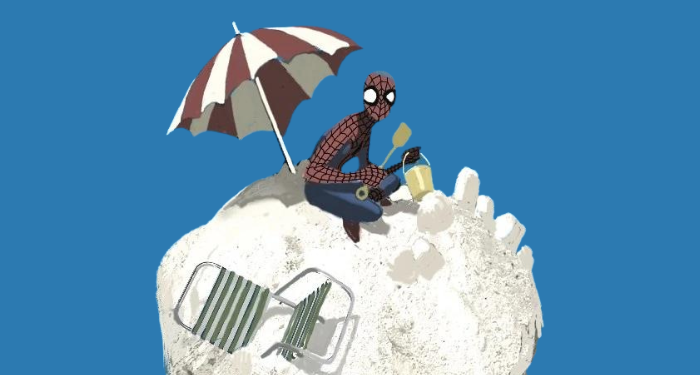
Swing In for the Best Spider-Man Comics
The best Spider-Man comics are spread out across 60 years of publication. That may seem a little daunting for new fans wanting to read some of the best classics. Fortunately, we live in a digital age, and you can find many of these either online or in printed collections of the best stories. But what makes this selection of comics so special? Is it the primary character, Peter Parker, a teenage genius with the extraordinary powers of a radioactive spider? In part, certainly, but not entirely, because over 60 years, you have to allow some room for growth in your characters. The “Spider-Mantle” has stretched and flexed during that time, introducing aliens, clones, and multiverse variants. However, it is not the spider that binds them together. It is their fundamental core as people. Whether it’s Peter, Miles, Gwen, or any other Spider-character, you will always find that same sense of awe in this new power, that same sense of guilt that comes with the responsibility, and the same determination to never let it happen again.
Each of the following comics is considered among the best of Spider-Man comics to date. Again, that’s a lot of time to cover; especially when the first two-thirds were created during a time when Marvel kept the Spider-Man creative team exclusive to its inner circle, which was predominantly white men. Fortunately, we are now seeing more diversity in the creative teams, encouraged by the diversity in characters as well.
The Best Spider-Man Comics from the Silver Age
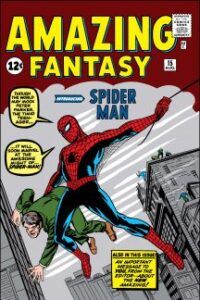
Amazing Fantasy #15 (1962) by Stan Lee & Steve Ditko
No matter how many times Marvel reboots Spider-Man/Peter Parker, there will always remain one key element in his origin: the death of Uncle Ben. The death of his parents, the bullying in high school, and the radio-active spider — all of it contribute to Peter’s journey, but nothing truly cements his Spider-Man persona like the guilt and sense of responsibility he feels for Ben. When Peter discovers his newfound powers, he reacts like most teenagers (a reminder of his youth as a character). There is fame, success, and admiration from people who would never have looked twice at a nerdy boy. But that moment when Peter realises he has the power — nay, the responsibility to do something, you know you are witnessing that significant turning point in the story. This is the driving force behind Peter Parker being Spider-Man. This is the moment when you understand the true duality of Spider-Man/Peter Parker: not between his personas but between his internal battle with his guilt. The perfect start for the best Spider-Man comics.
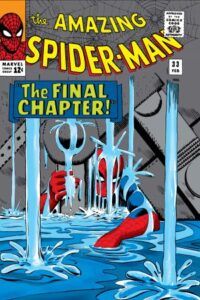
“If This Be My Destiny” in The Amazing Spider-Man #31-33 (1965-1966) by Stan Lee & Steve Ditko
Many of the earlier Spider-Man comics, while historic in character development, are also reflective of the times in which they were published. “If This Be My Destiny” is a perfect example of that balance: HUGE character arc and personal growth for Peter Parker in the role of Spider-Man, and HIGHLY misogynistic in Peter’s behaviour – particularly towards his girlfriend of the time, Betty Brant. The story stands out primarily for the iconic image of Spidey buried under broken machinery and rubble but determined to fight on. It is about his determination to keep trying. From this moment, Spidey fans knew that nothing could ever defeat Spider-Man. Ditko’s art in displaying a beaten and broken Spider-Man is breathtaking. I love this story, even with its time-capsule behaviour of sexism in the 1960s.
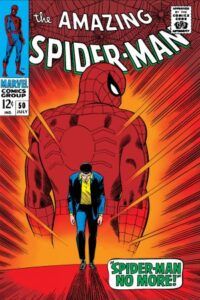
“Spider-Man No More” in The Amazing Spider-Man #50 (1967) by Stan Lee & John Romita Sr
Spider-Man knows better than anyone that being a superhero is not all it’s cracked up to be. Often it sucks. As Spider-Man, Peter is already weighed down with guilt and the overbearing sense of responsibility that comes with the role. Eventually, the weight of everything in life is just too much, and he has to walk away. “Spider-Man No More” is considered by many as being the how-to guide for when heroes quit. It even gave us the iconic scene of Spider-Man’s costume in the garbage can as Peter walks away. It also inspired the movie Spider-Man 2.
The Best Spider-Man Comics from the Bronze Age
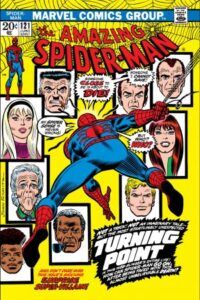
“The Night Gwen Stacey Died” in The Amazing Spider-Man #121 (1973) by Gerry Conway & Gil Kane
It was inconceivable. The superhero did not save the girl. A major and important character died. And she stayed dead. It was goddamn heartwrenching. Andrew Garfield and Emma Stone did an amazing job portraying this in the movie The Amazing Spider-Man 2, but it is still nothing compared to the first time you read the full story in the comics. When Garfield revisits the trauma in No Way Home, I still shiver with grief. It seems ridiculous for such a visceral reaction to a comic book character, but the narrative and lead-up to this iconic scene draws you into each panel; resting on Spider-Man’s confidence, his skill and ability, and the idea that Marvel any comic book would never go that far. No reader has trusted a comic book creator since then.
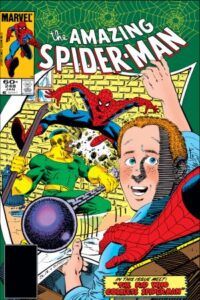
“The Kid Who Collects Spider-Man” in The Amazing Spider-Man Vol.1 #248 (1984) by Roger Stern, Ron Frenz & Terry Austin
There are no villains, no great story arc, and no secrets unfolding. It’s a stand-alone issue; one may even consider it a “filler.” And yet, it is a stand-out. Spider-Man swings in to visit his number one fan, a young boy who collects all things Spider-Man. It’s an impressive scrapbook, like a highlight reel of Spider-Man’s greatest hits. Surprisingly, Spider-Man chooses to reveal his identity and point out that he took most of the photos in those articles. There is a sense of “Whut?” knowing this is important because Spidey values his secret identity. He doesn’t go revealing it to simply anybody (well, at least back then…). Then the kicker is revealed: The Kid Who Collects Spider-Man lives in a centre for terminally ill patients; a villain Spider-Man cannot defeat. This issue rates as one of the best because it shows the heart of Spider-Man.
Honourable mention to Friendly Neighborhood Spider-Man #6 (2019) by Tom Taylor and art by Juann Cabal. They took a similar approach in the comic, with Spider-Man connecting and inspiring a young fan again. Well presented and an affectionate call-back to the 1984 issue.
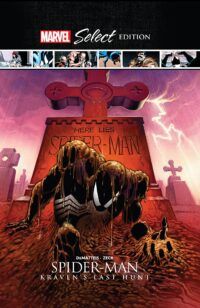
“Kraven’s Last Hunt” in Web of Spider-Man#31-32, The Amazing Spider-Man #293-294, and Spectacular Spider-Man #131-132 (1987) by J.M. DeMatteis and Mike Zeck
This amazing Kraven/Spider-Man story occurs over three separate cross-overs, and I am very grateful for it to be collected in a single-volume trade paperback. Despite being Kraven’s story, it is one of the best Spider-Man comics of all time, addressing the ultimate question: What if the villain wins? Kraven the Hunter has always been focused on the conquest, the hunt, and the challenge. In this story, Kraven finally achieves his goal of “killing” Spider-Man and then replacing him. It is not enough to win; Kraven must destroy him. And then what happens? No, seriously, Kraven wants to know. The storytelling is so powerful; it calls directly to the soul of each character and leaves readers with a lot to think about long after their eyes have dried.
Into the Modern Age of Spider-Man

Supaidāman: 1 (2002) by Kōsei Ono and Kazumasa Hirai, art by Ryōichi Ikegami
Also known as Spider-Man: The Manga, it started as a simple retelling of Spider-Man in a Japanese setting with more original material introduced later. The original run was way back in 1970, but the more recent editions in 2002 are treasures, especially with Ikegami’s illustrations. Here we meet Yu Komori as Spider-Man’s teenage alter ego. Some things never change, for that is the essence of Spider-Man: teen genius, a little withdrawn, bitten by a radioactive spider during a science demonstration, racked with guilt from the unintentional death of another.
The difference is the manga style and its slightly darker tone compared with the original Spider-Man’s lighter days. I know devout fans hold the Venom stories as the greatest exploration of Spider-Man’s dark side. But something about that absolute hopeless despair is captured so deeply within the manga comics. Take a look at this cover: Yu’s eyes are so haunted and tormented. That’s the thing about Spider-Man. So many people think it is about the quick repartee and comebacks. But cast your mind back to movies. NONE OF THEM ever have a truly happy ending. It’s almost like Spider-Man is not allowed to have happy endings. Only the best Spider-Man comics are brave enough to admit that.
Rumour is we might see Supaidāman in the upcoming Into the Spider-Verse 2, but we will have to wait until June 2023 to see.
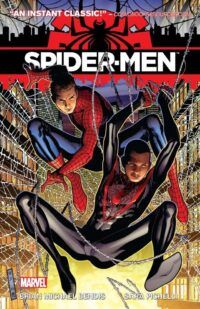
Spider-Men #1-5 (2012) by Brian Michael Bendis and Sara Pichelli
This is it. This is the first meeting of Peter Parker (Earth 616) and Miles Morales (Ultimate Universe). This is the best of both worlds and brings it all together. Peter is the one misplaced in the Multiverse and comes face to face with his own mortality when he learns his Ultimate Universe equivalent has died. It doesn’t help that someone else has taken up the Spider-Man costume, and Peter’s not exactly sure how he feels about that. Peter and Miles are very different as their own incarnations of the character, but this collection shows how they are both Spider-Man–even if they realise this the hard way. Pichelli is the absolute best here, allowing fluidity across the panels and creating the most dynamic fight scene I have seen in recent times.

Spider-Verse Vol. 3 #9-15 (2014-2015) by Dan Slott, Olivier Coipel & Guiseppe Camuncoli
What’s better than our favourite neighbourhood Spider-Man? A whole Multiverse of Spider-Men! Wait, what is the collective for Spider-Man? Any web, I personally feel like this is the only crossover Marvel got right (though my opinion might be biased). The trigger for this madness is Morlun, a villain from Earth-001 who hunts all Spider-Totems — that mystical link between human and spider. He is one of the few who has successfully killed Spider-Man across various Earths, and this time he is bringing the family. Fortunately, Spider-Man has his own Spider-Family, leading to a life-or-death battle across the Marvel multiverse. I love how the creators have included the unique and sometimes nice touches of Spider-Men across the ages. It’s full drama and high action all the way, but its true strength is bringing readers of all ages together in this magnificent crossover. Without it, we are unlikely to have ever been blessed with Into the Spider-Verse, only the best Spider-Man movie of all time (see my complete and convincing argument here).
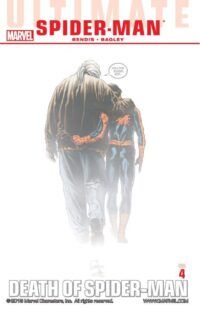
Death of Spider-Man: Ultimate Comics Spider-Man (2009) #4 by Brian Michael Bendis and Mark Bagley
You know it’s going to happen. It says it right on the cover. Every page leads up to it. But when it actually happens — when Spider-Man/Peter Parker dies — a little of your comic book innocence dies along with him. Making this story in the Ultimate Universe does not soften the blow. Peter Parker is still the same nerdy teen weighed down with the same guilt for Uncle Ben and his responsibility to protect those he loves, especially Aunt May. The soul of the character is still the same. His absolute determination to do what is right and advocate for what is right. Personally, I think this one needs to be read at the same time as Death of Spider-Man: Prelude and Death of Spider-Man Fallout. The first, because you can feel the emotional volcano building with pressure; the latter, because we need to see how this impacts those around him as well. It also introduces Miles Morales, who is a breath of fresh air and a brilliant return to the innocence and youthfulness of Spider-Man.
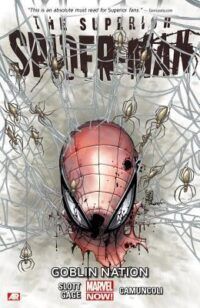
“Goblin Nation” in Superior Spider-Man #27-31 (2014) by Dan Slott and Guiseppe Camuncoli
Doc Ock body-swapped with Peter Parker and was determined to prove he was the better hero. Risky and controversial, it was also ground-breaking as it reset the parameters of Spider-Man and redefined the villains of this series. The epic conclusion sees Octavius hopelessly battle against Norman Osborn and his army of Green Goblins. It is here Octavius realises: he is simply NOT Spider-Man. Until that moment, Octavius never understood the sacrifice of being Spider-Man: that connection with something greater in the community, no matter how much crap comes tumbling down on you. In this moment of revelation, Octavius does the one true Spidey-thing: he sacrifices his life so that Peter can live again. And that moment when Osborn realises he ain’t fighting Octavius anymore? Worth every dollar you will pay to get your hands on this Spidey-goodness. *chef’s kiss*
Shout out to Humberto Ramos, who was the primary artist for earlier issues in Superior Spider-Man, especially for the “Superior Venom” in issue #15. Ramos was able to draw Spider-Man as Spider-Man while balancing it with a cartoonish touch of SpideyOck. “Superior Venom” was his first work giving us fluidity and a sense of danger that oozed off the page. “Goblin Nation” is my fave out of the series, but it is worth reading the entire catalogue just to appreciate Ramos’ contribution to Spidey’s portfolio.
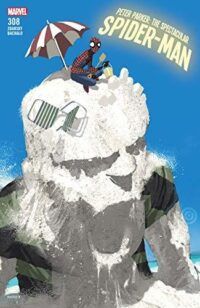
“Cracked Hourglass” in The Spectacular Spider-Man #308-309 (2018) by Chip Zdarsky and Chris Bachalo
The secret to Spidey’s universal appeal is his relatability. No, we’re not all going to start phwipping through New York City. But at no point in the comics do we ever forget that there is a person in the costume. Peter struggles with the responsibility of being a superhero, but he does not shy away from it. His empathy for his rogues may seem like a detriment to some but, as Peter reflects, it is often the only way he can hold on to his humanity.
Marko Flint/Sandman is facing his own mortality, and a life wasted fighting his nemesis, Spider-Man. He is presented as a broken man, desperately trying to pull himself together. When Spidey learns from J. Jonah Jameson that Flint is in hospital for his final moments, Peter chooses to take Flint to his favourite place in the city and simply let go. The dialogue between Jameson and Peter afterwards calls to the very heart of Spider-Man’s responsibility: constantly on heightened awareness to make the right choice. It’s exhausting enough with everyday decisions, but Spidey shows the extensive weight that sits on superheroes.
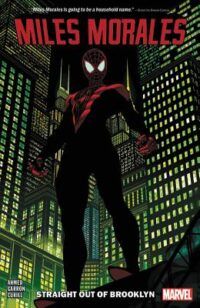
Miles Morales, Vol 1: Straight Out of Brooklyn (2019) by Saladin Ahmed, Javier Garrón, and David Curiel
Ahmed has taken the reins with Miles and gives us a warm welcome into Spider-Man comics. There are still bits and pieces of Spider-Man’s mythos coming through, but the best part is Miles’ relatability. Just like Peter Parker, Miles Morales feels like a real person, someone you can associate with, who you might even walk past in the street while ditching school. At the same time, it’s new, helped along by Garrón’s smooth drawing. If you’re looking to jump into Spider-Man for the first time, you can easily start with this volume and then work your way back through the list above. It will honour everything you will ever know about Spider-Man in every shape, form, and costume.
Want to know more about Spider-Man’s villains across the years? Check out our complete list of the Best Spider-Man Villains Across the Multiverse here. We can also help you untangle the web of Spider-Man movies here.
Spider-Man has always been one of the key players in Marvel’s hip pocket. Since his debut, Spider-Man remains in the top three coveted contracts for any creator on the team. With the wide variety built into the Spider-verse, it would be great to see more opportunities come available — though, they can only shine when they are given some decent storylines to work with. Please, no more Clones and never ever EVER revisit “One More Day.” Ever.
















